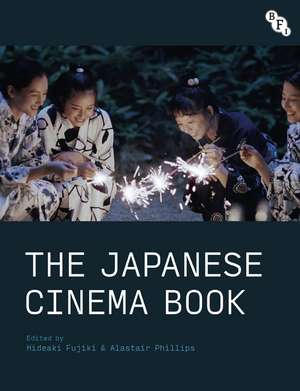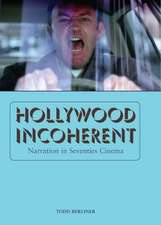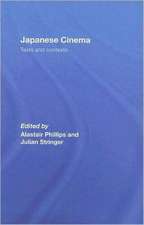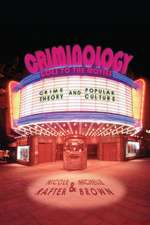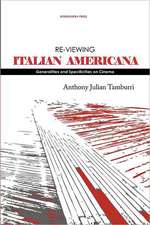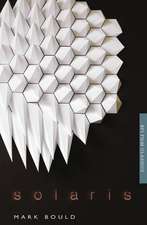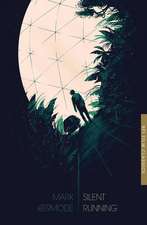The Japanese Cinema Book
Editat de Hideaki Fujiki, Alastair Phillipsen Limba Engleză Paperback – 15 apr 2020
Preț: 270.94 lei
Preț vechi: 300.33 lei
-10% Nou
Puncte Express: 406
Preț estimativ în valută:
51.85€ • 53.93$ • 42.81£
51.85€ • 53.93$ • 42.81£
Carte disponibilă
Livrare economică 24 martie-07 aprilie
Livrare express 08-14 martie pentru 103.97 lei
Preluare comenzi: 021 569.72.76
Specificații
ISBN-13: 9781844576784
ISBN-10: 1844576787
Pagini: 624
Ilustrații: 100 bw illus
Dimensiuni: 189 x 246 x 29 mm
Greutate: 1.35 kg
Editura: Bloomsbury Publishing
Colecția British Film Institute
Locul publicării:London, United Kingdom
ISBN-10: 1844576787
Pagini: 624
Ilustrații: 100 bw illus
Dimensiuni: 189 x 246 x 29 mm
Greutate: 1.35 kg
Editura: Bloomsbury Publishing
Colecția British Film Institute
Locul publicării:London, United Kingdom
Caracteristici
Provides the most comprehensive guide to date of Japanese cinema in a single resource, covering theories, approaches, industry, stardom, style, and genre
Notă biografică
Hideaki Fujiki is Professor of Cinema Studies and Japanese Studies at Nagoya University, Japan. He is the author of Making Personas: Transnational Film Stardom in Modern Japan and his essays have appeared in Stephanie Dennison and Song Hwee Lim (eds.) Remapping World Cinema: Identity, Culture and Politics in Film, Cinema Journal, Japan Forum, Review of Japanese Culture and Society, and Iconics, and he has contributed to the Oxford Handbook of Japanese Cinema. Alastair Phillips is Professor of Film Studies at the University of Warwick, UK. He is the author of City of Darkness, City of Light: Émigré Filmmakers in Paris 1929-1939 and Rififi: A French Film Guide. He is the co-author of 100 Film Noirs (BFI Screen Guides) and the co-editor of Journeys of Desire: European Actors in Hollywood; Japanese Cinema: Texts and Contexts and A Companion to Jean Renoir. His articles on international film history and aesthetics have appeared in numerous journals and books. He is an editor of the journal Screen and serves on the Editorial Advisory Boards of The Journal of Japanese and Korean Cinema and the BFI Film Classics series.
Cuprins
TABLE OF CONTENTS Acknowledgments Introduction Japanese Cinema and Its Multiple Perspectives Hideaki Fujiki (Nagoya University, Japan) and Alastair Phillips (University of Warwick, UK) Part One: Theories and Approaches 1. Early Cinema Difference, Definition and Japanese Film Studies Aaron Gerow (Yale University, USA) 2. Authorship Author, Sakka, Auteur Alex Jacoby (Oxford Brookes University, UK) 3. Spectatorship The Spectator as Subject and Agent Hideaki Fujiki (Nagoya University, Japan) 4. Film Criticism Soviet Montage Theory and Japanese Film Criticism Naoki Yamamoto (University of California, Santa Barbara, USA) 5. Narrative Multi-viewpoint Narrative: From Rashomon (1950) to Confessions (2010)Kosuke Kinoshita (Gunma Prefectural Women's University, Japan) 6. Gender and Sexuality Feminist Film Scholarships: Dialogue and Diversification Hikari Hori (Toyo University, Japan) Part Two: Institutions and Industry 7. The Studio System The Japanese Studio System Revisited Hiroyuki Kitaura (Kaichi International University, Japan) 8. Exhibition Screening Spaces: A History of Japanese Film ExhibitionManabu Ueda (Kobe Gakuin University, Japan) 9. Censorship Censorship as Education: Film Violence and Ideology Rachael Hutchinson (University of Delaware, USA) 10. Technology Sound and Intermediality in 1930s Japanese Cinema Johan Nordström (Tsuru University, Japan) 11. Film Festivals Engasai Inside Out: Japanese Cinema and Film Festival Programming Ran Ma (Nagoya University, Japan) 12. Stardom Queer Resonance: The Stardom of Miwa AkihiroYuka Kanno (Doshisha University, Japan) 13. Experimental Cinema Forms, Spaces and Networks: A History of Japanese Experimental FilmJulian Ross (Leiden University, The Netherlands) 14. Transmedial Relations Manga at the Movies: Adaptation and Intertextuality Rayna Denison (University of East Anglia, UK) 15. The Archive Screening Locality: Japanese Home Movies and the Politics of Place Oliver Dew (UK) Part Three: Film Style 16. Cinematography The Trans-pacific Work of Japanese Cinematographers Daisuke Miyao (University of California, San Diego, USA) 17. Acting Spectral Bodies: Matsui Sumako and Tanaka Kinuyo in The Love of Sumako the Actress (1947) Chika Kinoshita (Kyoto University, Japan) 18. Set Design Colour and Excess in Undercurrent (1956) Fumiaki Itakura (Kobe University, Japan) 19. Music When the Music Exits the Screen: Sound and Image in Japanese Sword Fight Films Yuna Tasaka (Belgium) Part Four: Genre 20. Period Drama The Duplicitous Topos of Jidaigeki Philip Kaffen (The University of North Carolina at Charlotte, USA) 21. The Horror Film The Ghosts of Kaiki Eiga Michael E. Crandol (Leiden University, The Netherlands) 22. Anime Compositing and Switching: An Intermedial History of Japanese AnimeThomas Lamarre (McGill University, Canada) 23. Melodrama Melodrama, Modernity and Displacement: That Night's Wife (1930) Ryoko Misono (with Hideaki Fujiki and Alastair Phillips) 24. The Musical Heibon and the Popular Song Film Michael Raine (Western University, Canada) 25. The Yakuza Film The Yakuza Film: A Genre 'Endorsed by the People' Jennifer Coates (University of Sheffield, UK) 26. Documentary 'Filling Our Empty Hands': Ogawa Productions and the Politics of Subjectivity Ayumi Hata (Japan) Part Five: Time and Spaces of Representation 27. Ecology Toxic Interdependencies: 3/11 Cinema Rachel DiNitto (University of Oregon, USA) 28. Rural Landscape The Cinematic Countryside in Japanese Wartime Filmmaking Sharon Hayashi (York University, Canada) 29. The Home Separations and Connections: The Cinematic Homes of the Showa 30sWoojeong Joo (Nagoya University, Japan) 30. The City Tokyo 1958 Alastair Phillips (University of Warwick, UK) Part Six: Social Contexts 31. Empire Cinematic Dualities: Shanghai Filmmaking in the Era of the Japanese Occupation Ni Yan (Japan Institute of Moving Image, Japan) 32. The Occupation Pedagogies of Modernity: CIE and USIS Films about the United Nations Yuka Tsuchiya (Kyoto University, Japan) 33. Social Protest Japanese Student Movement Cinema: A Dialogic Approach Masato Dogase (Nagoya University, Japan) 34. Minority Cultures Whose Song Is It? Korean and Women's Voice in Oshima Nagisa's Sing a Song of Sex (1967)Mika Ko (Hosei University, Japan) 35. Globalisation Japanese Cultural Globalisation at the Margins Cobus van Staden (South African Institute of International Affairs, South Africa) Part Seven: Flows and Interactions 36. Japanese Cinema and its Post-Colonial Histories Technologies of Co-production: Japan in Asia and the Cold War Production of Regional Place Stephanie DeBoer (Indiana University, USA) 37. Japanese Cinema and Hollywood Frontiers of Nostalgia: The Japanese Western in the Postwar EraHiroshi Kitamura (College of William and Mary, USA) 38. Japanese Cinema and its Peripheries Japan and Okinawa and the Politics of Exchange Andrew Dorman (UK) 39. Japanese Cinema and Europe A Constellation of Gazes: Europe and the Japanese Film Industry Yoshiharu Tezuka (Komazawa University, Japan) 40. Transnational Remakes and Adaptations Casablanca Karaoke: The Program Picture as Marginal Art in 1960s JapanRyan Cook (Emory University, USA) Select Bibliography Index
Recenzii
I'd recommend most of this book to anyone, but two chapters in particular [about manga adaptations in Japanese cinema] will leap out at readers of this blog.
With its preponderance of Japanese authors and the impressive variety of approaches it models, this volume marks a new era in the study of Japanese cinema. It presents new spins on old topics, and opens up any number of new avenues of inquiry. I can think of no other book that reveals the sheer richness of Japanese cinema to this degree. The Japanese Cinema Book is, simply, superb.
Fujiki and Phillips' edited collection of wide-ranging essays represents a timely intervention into the field of Japanese cinema studies by a diverse group of international scholars. Its breadth and coverage will ensure it assumes a prominent position as a standard text within the field.
With its preponderance of Japanese authors and the impressive variety of approaches it models, this volume marks a new era in the study of Japanese cinema. It presents new spins on old topics, and opens up any number of new avenues of inquiry. I can think of no other book that reveals the sheer richness of Japanese cinema to this degree. The Japanese Cinema Book is, simply, superb.
Fujiki and Phillips' edited collection of wide-ranging essays represents a timely intervention into the field of Japanese cinema studies by a diverse group of international scholars. Its breadth and coverage will ensure it assumes a prominent position as a standard text within the field.
